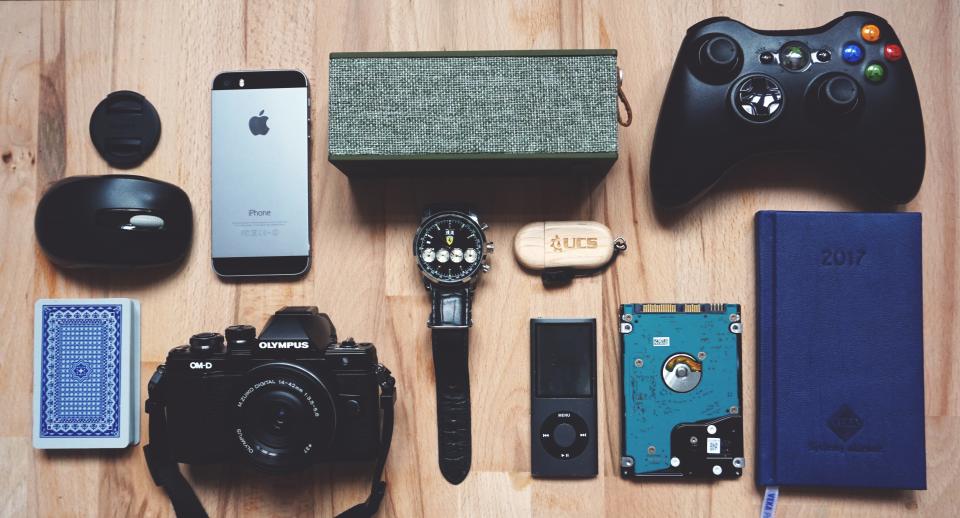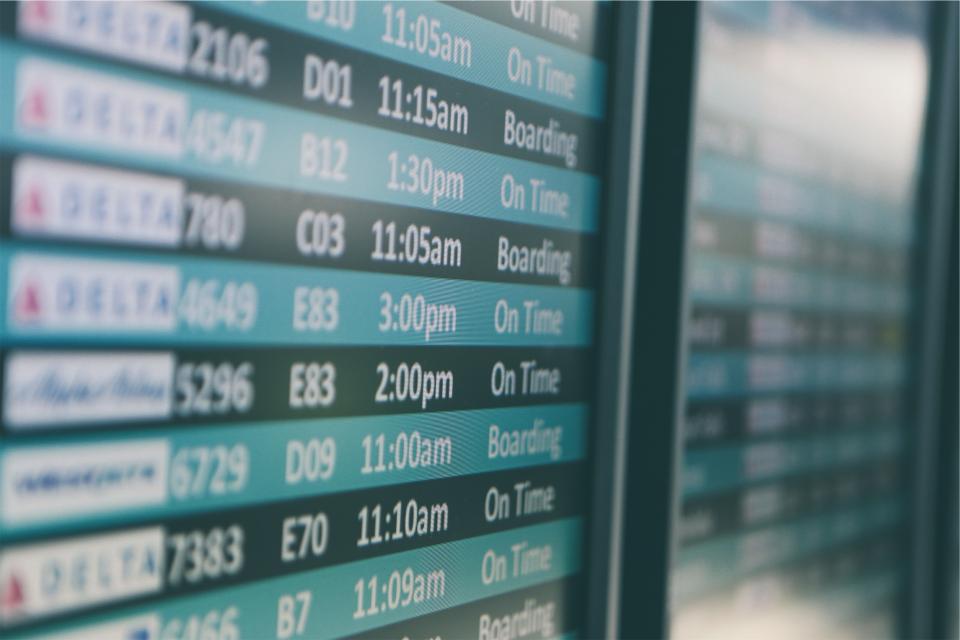Navigating Airports
Departing the U.S.
Bon voyage!
The time has finally come! You're about to begin your journey!
Maybe you're departing from a smaller airport, like the Lexington Bluegrass Airport, or maybe you're flying from a larger airport like Chicago or Atlanta. Either way, there are some things you'll need to know before you fly. One thing to be aware of is whether or not you'll have a connecting flight in the U.S. This means that if you're leaving from the Lexington airport, you might have a stop in Atlanta before you get on the international plane. You should be able to see those "in-between" flights when you purchase your tickets, but be sure you know! For the first leg of your journey, here are some general tips:
Going Through Security
It's only a nightmare if you're not prepared.
You can usually find the "Security" area by looking for long lines and big signs that say "TSA" or "Security." You'll want to make sure you're prepared (mentally and physically) to get through security. At some airports, it may be a short line that will move relatively quickly. At larger airports, there are usually really long lines. Look around for signs and monitors that show what to get out of your bags, what clothing items to take off, and what line you need to be in. Before you get into the heavy duty part of security, a Transportation Security Administration (TSA) Agent will ask to see your boarding pass and your passport to inspect both.
Inside Security
After seeing that TSA agent, you'll have to get prepared to put your items in the x-ray machine. You'll have to sort some of your items and put them in different plastic bins. Like we said early, keep an eye out for signs that will tell you what to put where to save you some time. One of the most important pieces will be your laptop, and really any electronic items you have. This could also include your phone, tablet, e-reader, camera, and more. Those items will have to go in a plastic bin separate from the rest of your stuff. Depending on the security, they may need their own bins or you may be able to put all electronics in one bin. You'll also
Electronics
This could include your laptop, phone, tablet, e-reader, camera, and more. They'll have to be separate from your other items, so get an extra bin!
Liquids
Make sure all liquids under 3.4oz are in a plastic bag and put in a bin for x-ray.
Clothing
Depending on the airport, you may need to remove your shoes, belts, jackets, large jewelry, etc. Plan ahead and dress for comfort and security lines.

After you put your items in their bins for the x-ray machine...it's your turn. Don't worry, you don't have to go through the tiny box. Instead, you'll either walk through a metal detector or you'll go through a millimeter wave advanced imaging technology. That's just fancy words for a standup x-ray type machine where you put your arms up and the machine spins around you to see if you have any concealed items or metals. Make sure you remove everything from your pockets, and you take off your shoes. If you forget, they'll remind you, and not politely.
Once you go through that step, you may have additional screening. This could include a pat down, having your carry-on items inspected by hand, turning your electronics on and off, or swabbing your items to check for explosive residue. Don't freak out. They have to do it randomly, and sometimes they'll see something that will prompt them to check. Just take a breath, relax, and do as they ask!
Getting Around the Airport

Once you've gone through security, it's time to find your gate! A gate in this case isn't something that lets you through a fence. Rather, it's a seating area where you and other people on your flight will wait until it's time to board the plane. Gates are usually numbered, and can be found in different terminals. To envision what this looks like, think of a tree. The tree is the airport, each branch is a terminal, and each leaf on the branch is the gate. To find what terminal and gate you need to be in, you can first look at your boarding pass. BUT the gate and terminal where your plane is docked can change! Be sure to check the departure/arrival boards and monitors to check for up-to-date gate numbers, boarding times, delays, and flight times.
Some advice: don't eat, rest, or shop until you've at least found your gate. You don't have to sit there right away, but you should definitely find where you need to be before doing anything else. Once you know where you gate is, you can relax, eat, use the bathroom, exchange your currency, and more. Just be sure to give yourself plenty of time to get back to your gate before you have to board the plane. All airlines shut the boarding door at least 10 minutes before departure, but some close even earlier. Make sure you know where you need to be and when you need to be there before you start exploring the airport.
Connecting Flights and Airports
You may have to fly through another airport before you reach your final airport. If you're stopping at a U.S. airport, you shouldn't have to go through security again.
Just like the first airport, don't shop, eat, or rest until you find your gate. This is a cardinal rule of "airporting" and when you're in a new airport going from one flight to another there are some more tips to make sure you don't miss your connecting flight.
Tips in Connecting Airports:
- If you have a short connection time, go immediately to your gate. You might not even want to entertain the idea of food, bathrooms, etc.
- You might be in a different time zone, and all flights operate on the time zone they're in. Make sure you know the local time when you arrive.
- Some airports are huge and require you to take a train from one terminal to another. This can take time, so get to your gate before exploring.
